Spring is one of the most anticipated times of the year.
The snow finally melts, green grass peeks through the ground, and some of the most beautiful flowers of the whole growing season begin to bloom.
If there is one color associated with spring, it’s yellow. Below, we will explore 20 of the most gorgeous yellow spring flowers that can bring a little extra sunshine to your garden.
1. Yellow Tulips
Perennial
Tulips don’t just come in a single color.
In fact, you can get tulips in every single color of the rainbow, but no hue quite invokes the feeling of springtime like the yellow tulip.
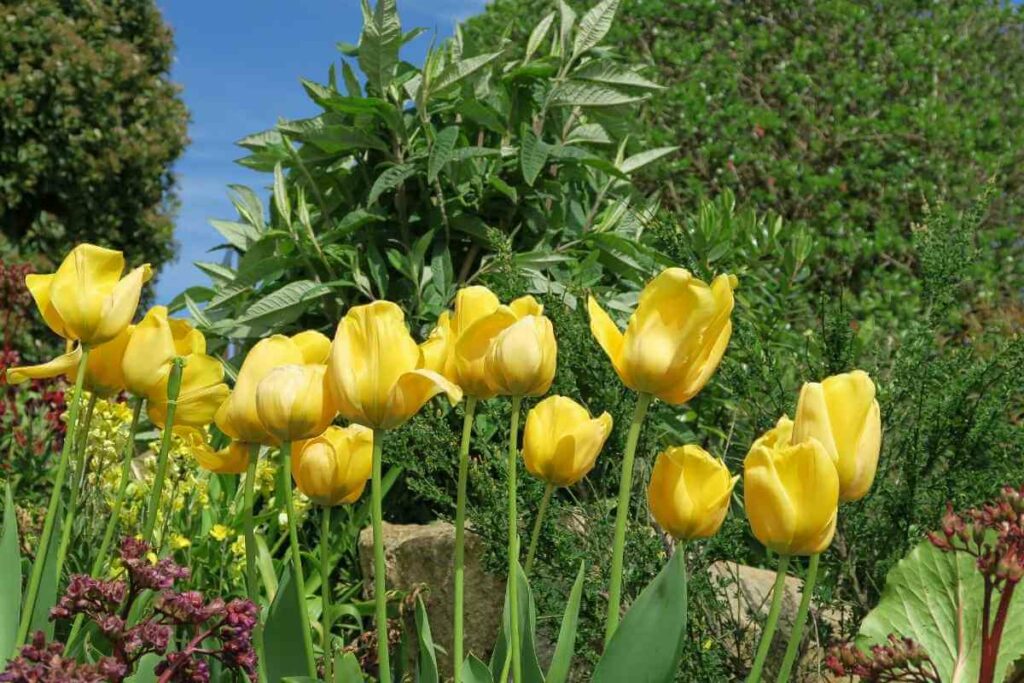
These bell-shaped flowers are ancient, having been first cultivated in Constantinople as early as 1055 and have been prized flowers ever since.
Tulips are actually part of the tulip family, and over the years have been hybridized to have everything from multicolored petals to lacy-edged leaves, making them both versatile and stunning to behold.
Beloved for being both beautiful and low maintenance, tulips are a brilliant choice for beginner gardeners that are looking for a burst of color.
2. Witch Hazel
Perennial
You may recognize the name of this deciduous shrub from your medicine cabinet, but witch-hazel isn’t just a skincare product used by the environmentally conscious.
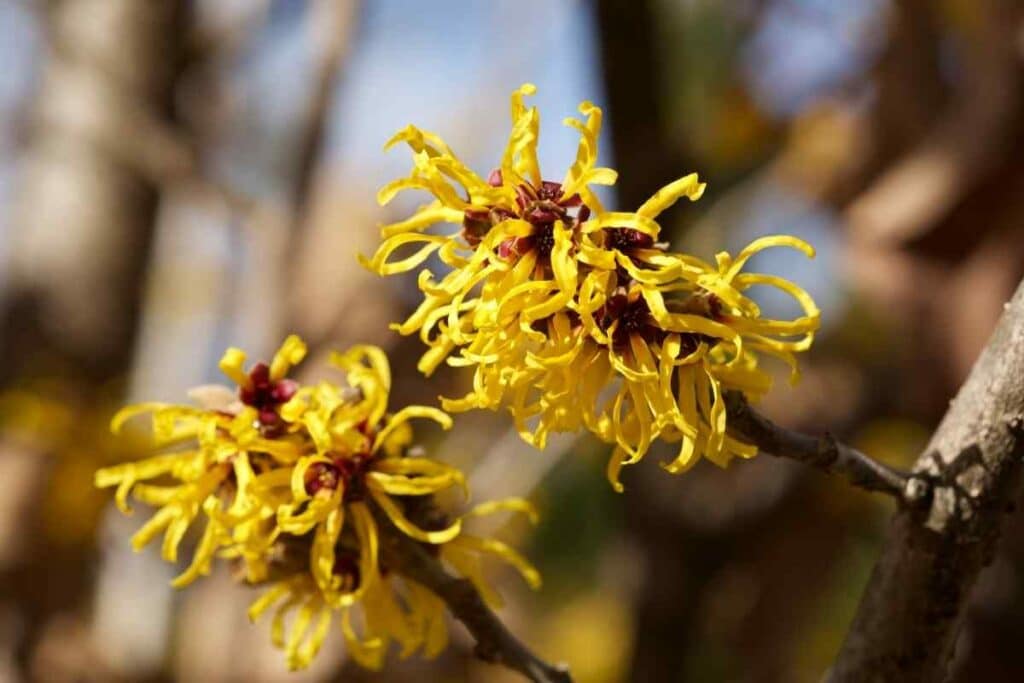
Witch-hazel is also a lovely yellow flower that can brighten any yard.
There are 5 species of witch-hazel, the most common being the Hamamelis virginiana, or American witch-hazel.
Not all witch-hazels are spring blooming.
Quite a few of the subspecies prefer the fall and winter times to show their cheery yellow blossoms, so if you want witch-hazel flowers to grace your garden in the spring, choose one of the two Asian witch-hazel varieties.
These two will flower between March and April.
3. Yellow Iris
Perennial
Iris flowers resemble delicate birds, spreading their wings to soak up the warm spring sun.
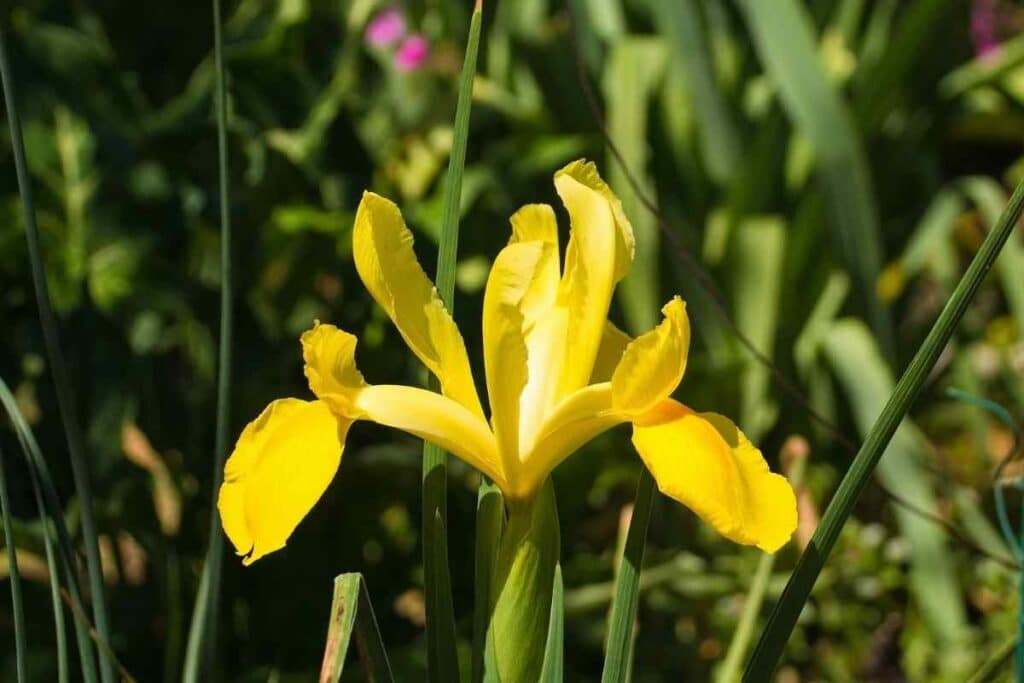
With their crinkled, curling petals and long green leaves, these flowers are considered to be some of the easiest yellow spring flowers to grow.
Although many of them look nearly identical, there are over 300 species of iris worldwide, and most all of them are highly adaptable and can be grown throughout the US.
So, whether you have a shady, sandy garden or a peaty, full sun growing space, there is an iris out there for you.
4. Yellow Archangel
Perennial
If you’ve never heard of yellow archangel before, you might have heard it referred to by one of its less flattering names; aluminum plant or yellow-weasel snout.
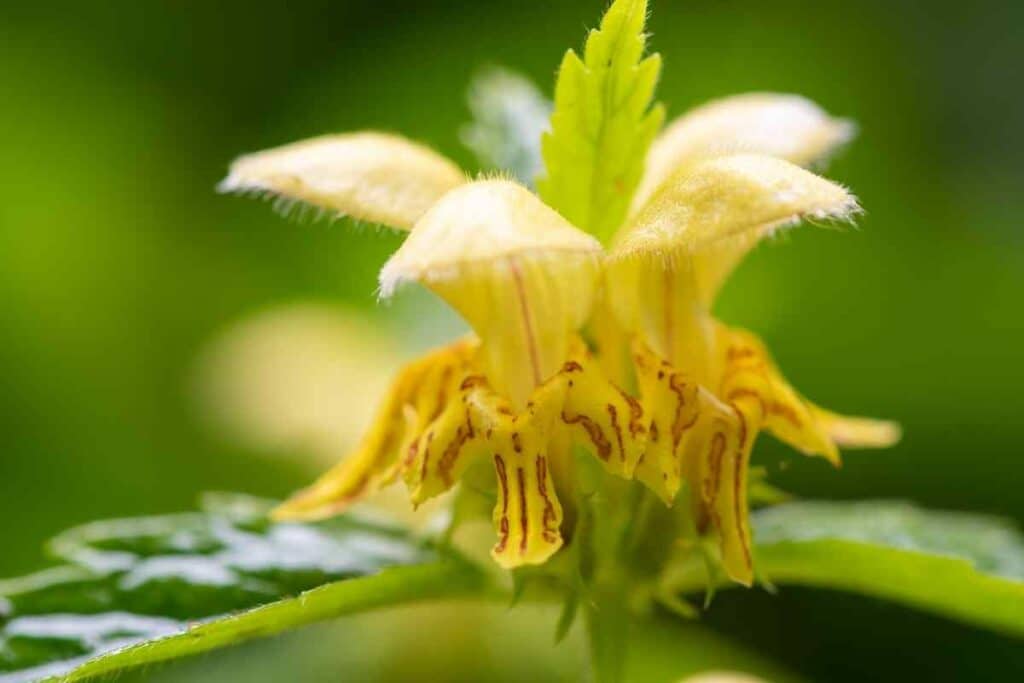
Despite these mildly offensive names, the yellow archangel remains a staple of wildflower fields and gardens in Europe.
This tall perennial can grow up to 31 inches tall and is part of the mint family.
It is native to most parts of Europe but isn’t quite as welcome in the US.
In fact: It is an invasive species in some parts of North America, having been marked as a noxious weed in Washington state, where its sale is strictly banned.
5. Winter Aconite
Perennial
When you picture a spring meadow, wildflowers bursting from the ground, you’re probably picturing something similar to winter aconite.
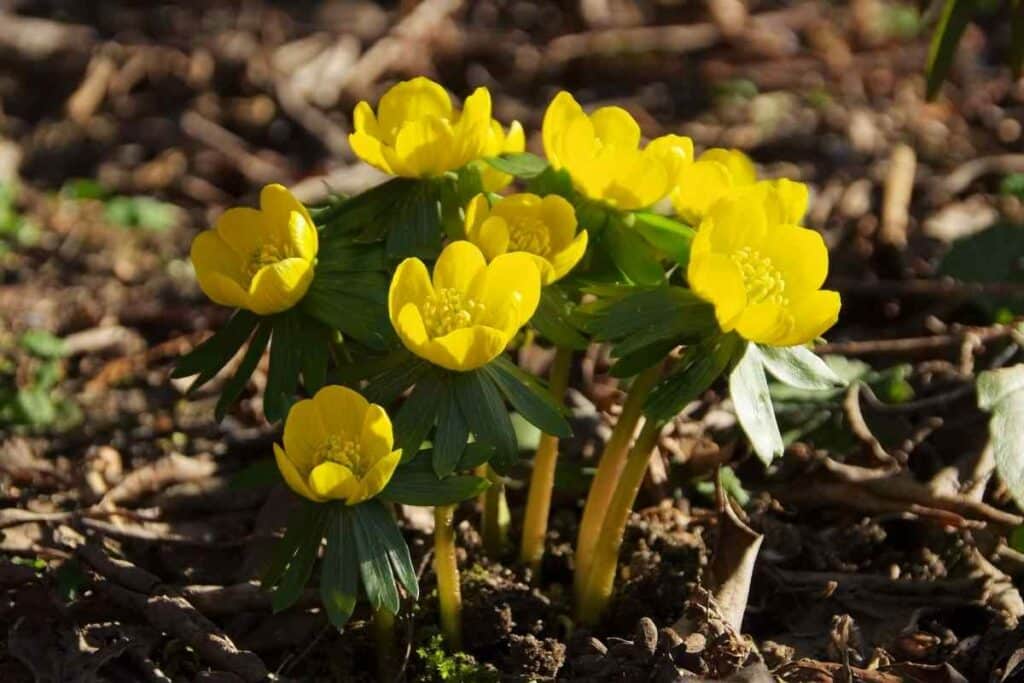
These small yellow blooms act as beautiful ground cover, taking advantage of the late winter and early spring sun to spring to life.
Although the word ‘winter’ is in the name, winter aconite can bloom anywhere from February to April, depending on the amount of sunlight available.
After soaking up all the sun possible, the winter aconite dies back to its tuberous root system, waiting patiently for the next bout of spring sunshine.
Don’t let these charming yellow flowers fool you, though.
Toxic: Winter aconite is actually poisonous to humans and most other mammals, containing a toxic element called cardiac glycoside.
6. Yarrow
Perennial
Yellow yarrow, native to Europe and Asia, has been growing in popularity as an attractive addition to springtime gardens.
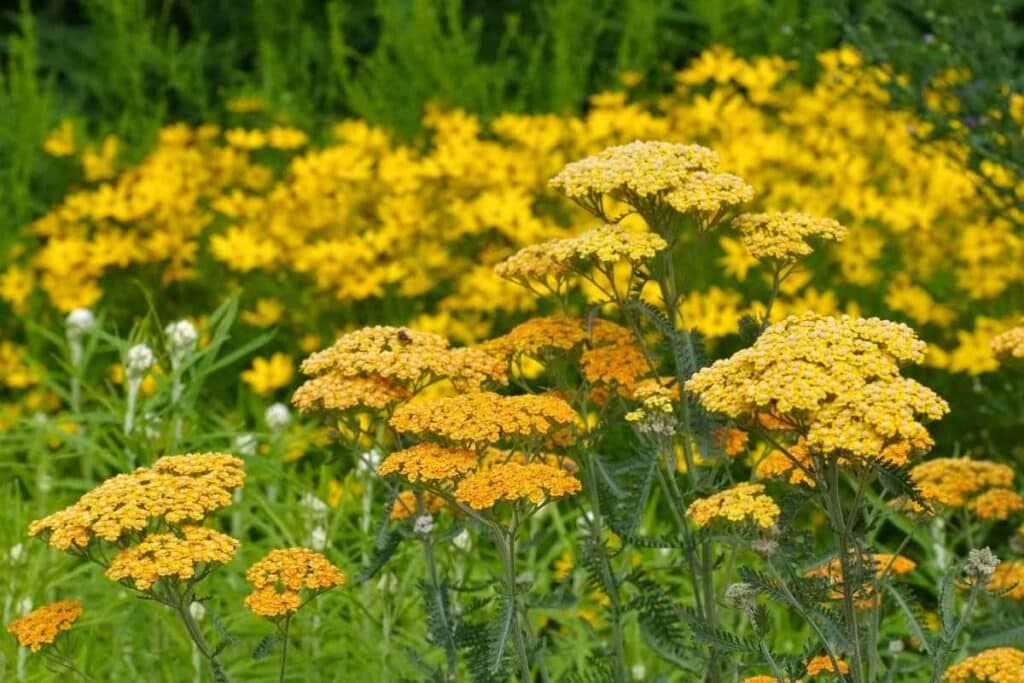
Before it graced flowerbeds, though, yarrow was used to stop nosebleeds and staunch wounds on the civil world battlefield.
Composed of small blossoms contained in tight groupings, yarrow comes in:
- yellow
- white
- pink, and a few other cultivated colors
In Europe and the US, it is considered ornamental, but in Australia and New Zealand, it isn’t as well-liked, often being thought of as an annoying weed.
Despite the Australian disdain for the yarrow flower, it was actually introduced on purpose as a cheap and hearty cattle feed.
7. Yellow Alyssum
Perennial
In April and May, yellow alyssum blooms in droves wherever planted.
Also known as basket-of-gold, this plant lives up to its name, blooming in golden yellow clusters that attract droves of wildlife.
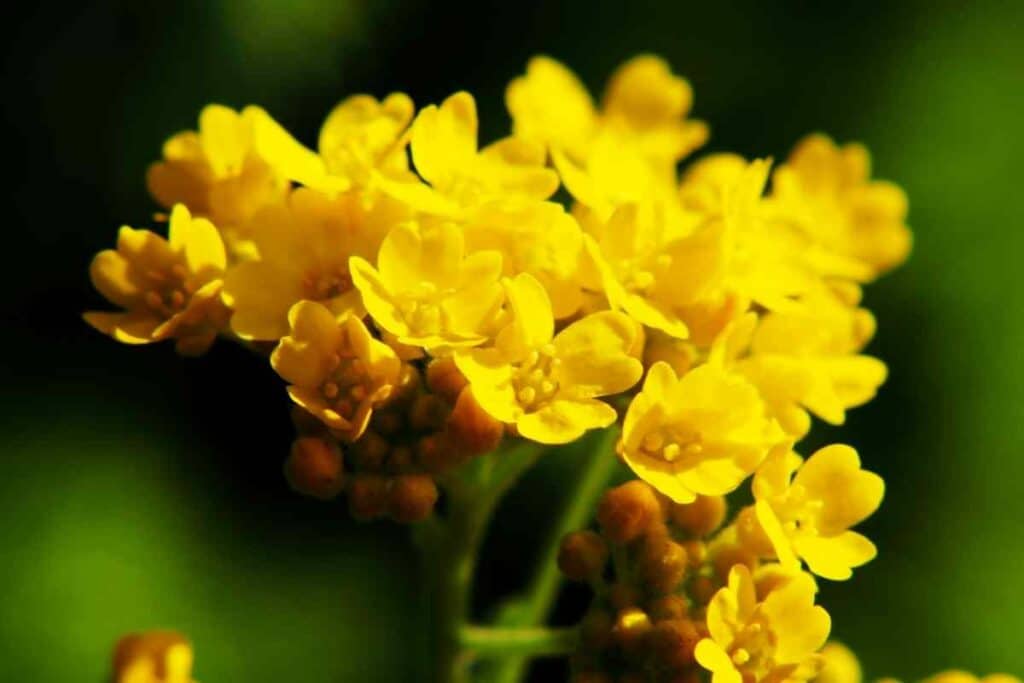
If you’re looking for a plant to cater to your local bee or butterfly population, yellow alyssum is the flower for you.
You’d think that a flower so popular with bees would smell pleasant, but strangely enough, this ground-cover flower is quite stinky.
Yellow alyssums smell has been compared to cat pee, of all things.
From Experience: Gardeners recommend planting this golden flower away from footpaths, to avoid its unfortunate smell overwhelming walkers.
8. Hellebores
Perennial
With heavy, cup-shaped flowers, hellebores are often mistaken as a member of the rose family.
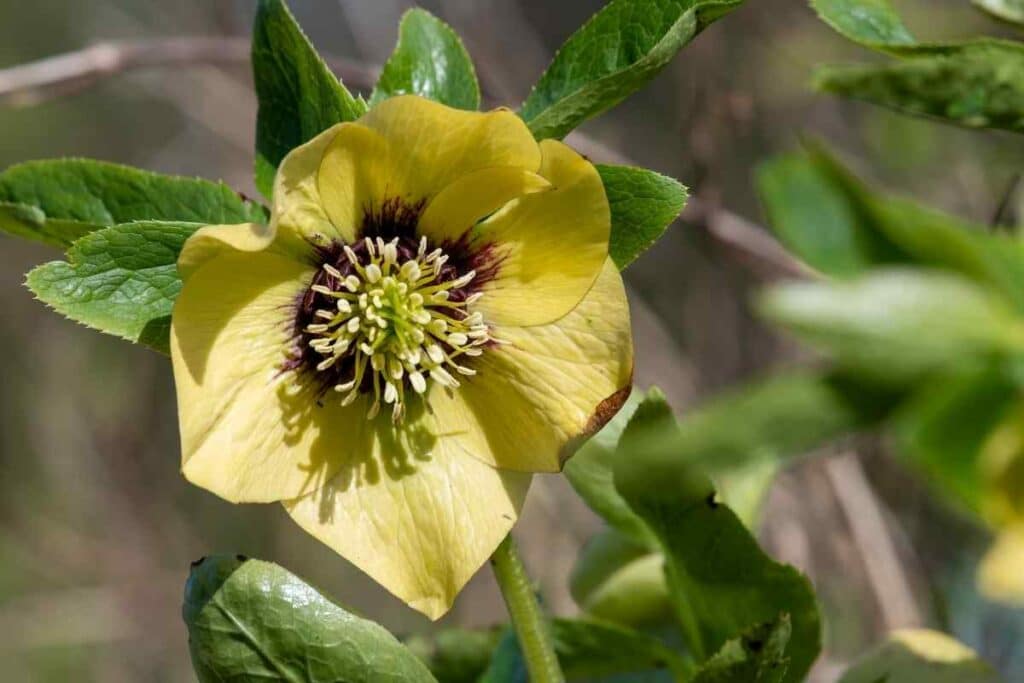
Other names for the spring flower are:
- winter rose
- Christmas rose
- and Lenten rose
Despite these nicknames, hellebores actually aren’t closely related to the rose at all, but that doesn’t mean that it won’t be a beautiful addition to any spring garden.
Originating in Europe and Asia, Hellebores has exploded in popularity worldwide in the gardening hobby and has recently been hybridized to create stunning new colors, but the classic yellow variety still shines as the perfect sunny complement to other spring flowers.
9. Marigold
Annual
Ranging from fiery orange to buttery yellow, marigolds are some of the simplest flowers to grow and can be found in almost every garden center during the spring and summer.
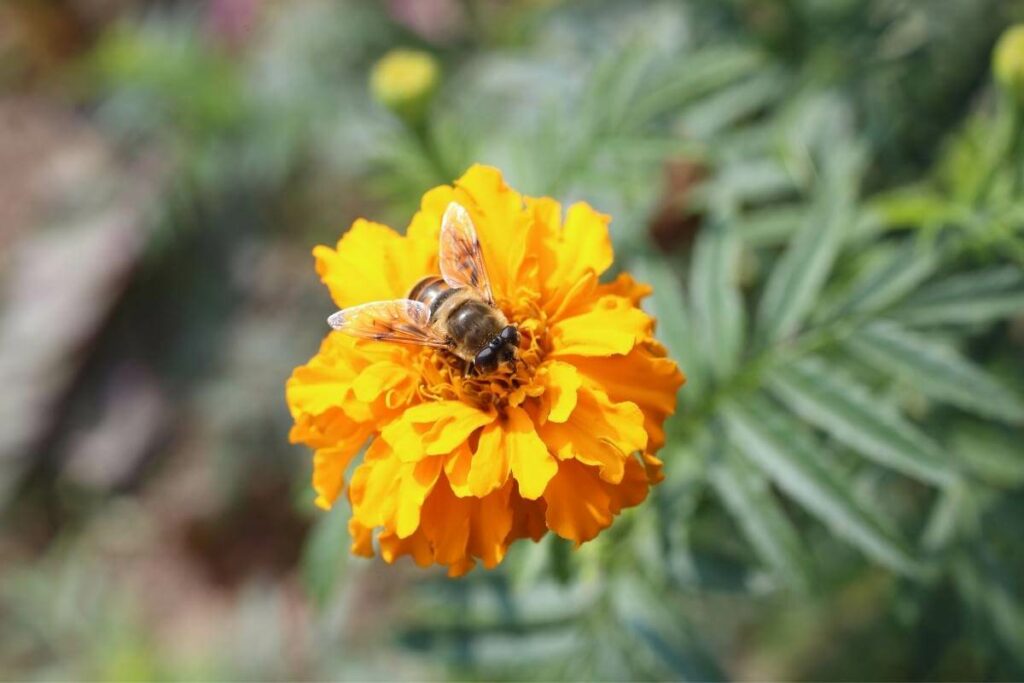
Marigolds may be short-lived, but they are forgiving flowers that can provide pops of color where you need it most.
Part of the daisy family, marigolds differ from their floral cousins with their massive amounts of smell, delicate petals.
Marigolds tolerate most soil types and will grow decently in semi-sunny areas, but they thrive most in full sun.
Most marigolds are annual, but a few varieties can be perennial as well if their perfect growing conditions are met.
10. Yellow Rose
Perennial
It may surprise you to know that there are dozens upon dozens of varieties of yellow roses, but despite the variations in name and shades, all yellow roses symbolize friendship.
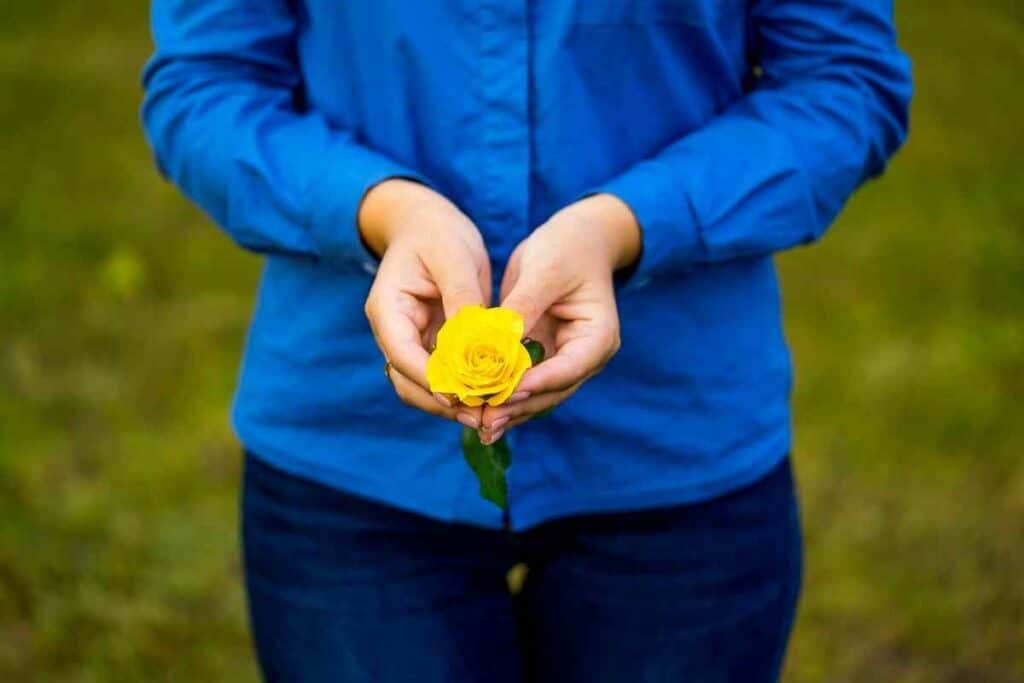
Despite their thorny exterior, yellow roses are a stunning yellow spring flower that is just as striking on the vine as they are in a vase.
Roses can be a bit persnickety when first planted, but once they have established themselves, roses will come back year after year, producing some of the most stunning yellow flowers found in the gardening hobby.
11. Japanese Rose
Perennial
Despite the similar name, the yellow Japanese rose is a completely different flower than the traditional rose you’ll see in gardens in North America.
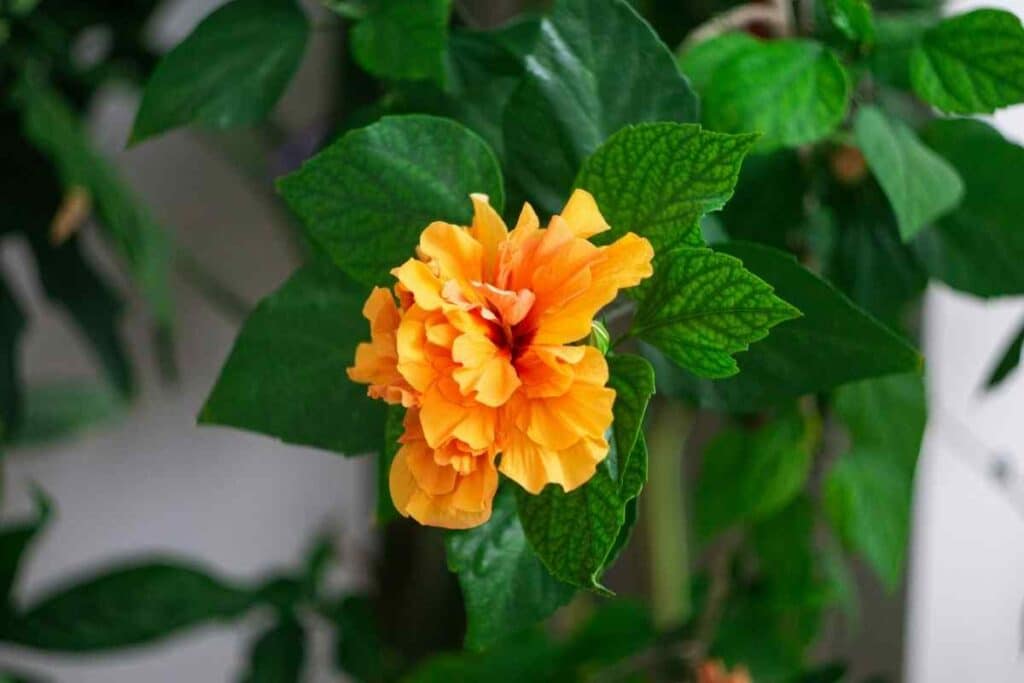
This deciduous perennial shrub doesn’t have the heavy blooms we’ve come to associate with roses. Instead, the blooms are smaller and more delicate.
Though their blooms may be smaller, the Japanese rose is a hardy plant that will grow in thickets on mountainsides, unbothered by rocky terrain or other vegetation.
Few People Know: The name Japanese rose is also used for two other flowers, the multiflora rose and beach rose, but the true yellow Japanese rose goes by the scientific name Kerria japonica.
12. Stella d’Oro Daylily
Perennial
You might not have heard of the Stella d’Oro Daylily, but you might recognize it more by its common name which is simply the daylily.

Native to Asia, the daylilies are grown all over the world, beloved for their sunny yellow color and ease of care.
Funnily enough, daylilies aren’t actually lilies. They are their own separate type of flower!
Daylilies can survive drought, frost, and are considered the perfect perennial by garden hobbyists.
Daylilies make exceptional cut flowers, lasting much longer than other yellow spring flowers in a vase or bouquet.
13. Azaleas
Annual/Perennial
Azaleas have been cultivated by gardeners for hundreds of years, beloved for their long last blooms and ability to survive for decades upon decades.
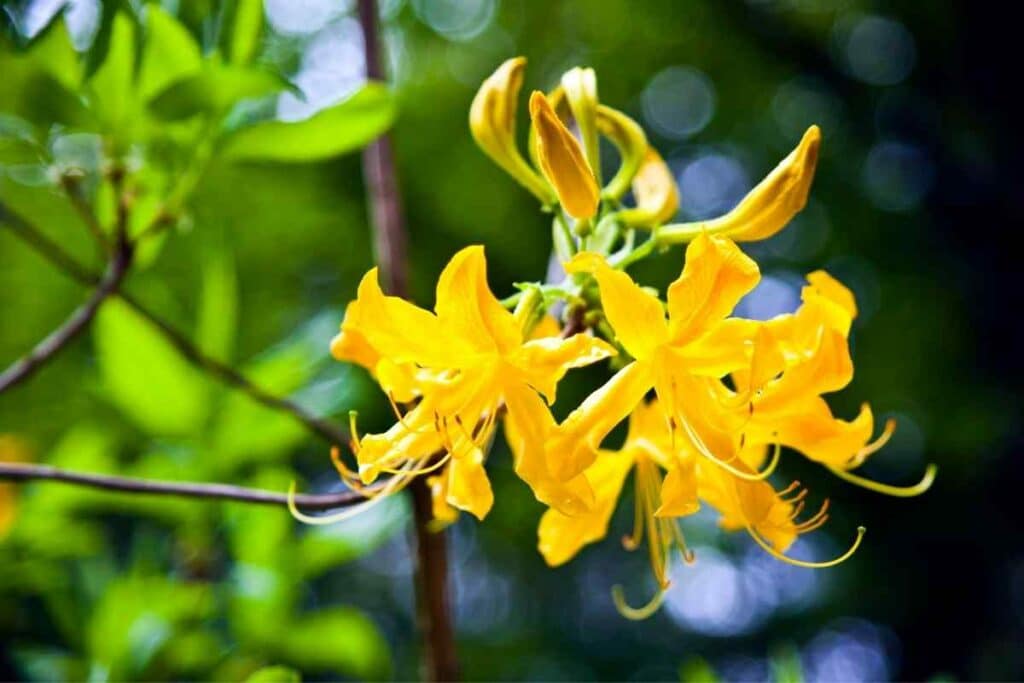
While there are no natural yellow azaleas, the hundreds of years of cultivation have produced hybridized yellow azaleas that are just as stunning as the originals.
Azaleas are part of the genus rhododendron, and certain colors or hybridizations may be sold under that name instead of the name azalea.
These yellow spring flowers flourish in partial shade, often growing best underneath trees.
14. Yellow Mimosa
Perennial
Unlike other plants on our list, the yellow mimosa is a tree instead of a flower or shrub.
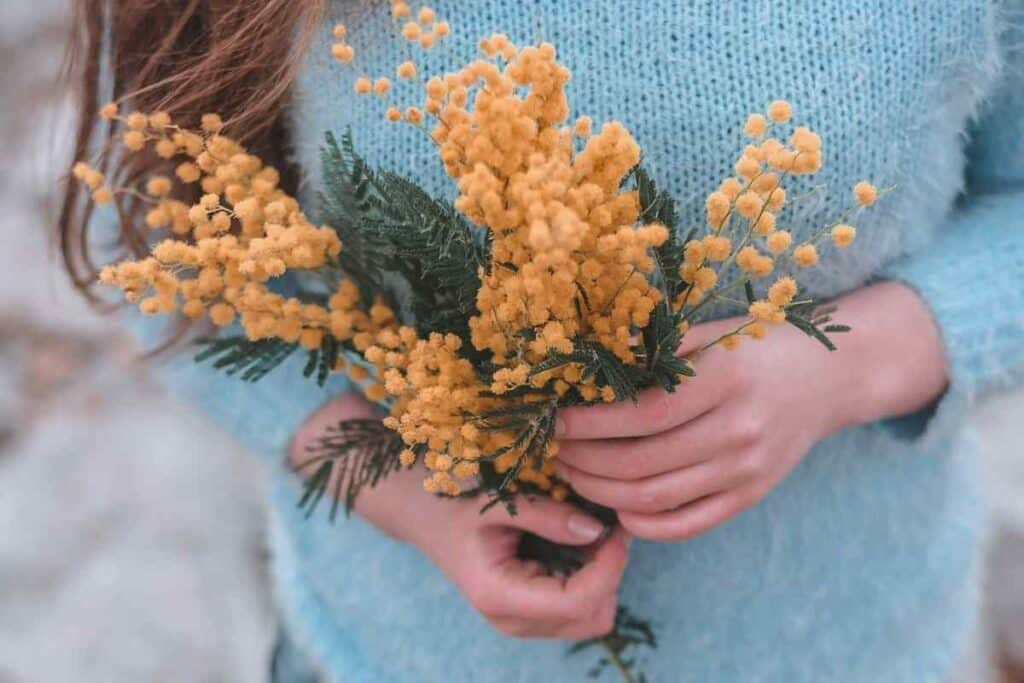
The yellow mimosa flowers are plentiful and almost fluffy in appearance. They bloom in late winter and early spring.
Nestled in feathery green foliage, the yellow mimosa flowers are some of the most stunning on our list.
They grow in large clumps that appear to turn the whole tree yellow. They also have a pleasant aroma.
Good to Know: One thing to watch out for with the yellow mimosa tree is that if it isn’t properly trimmed, it can grow anywhere from 20 to 40 feet tall!
15. Yellow Pansies
Perennial
Originally gracing the slopes in California, the yellow pansy, also known as the Johnny jump up, is an adorable type of violet that looks perfect in any spring garden.
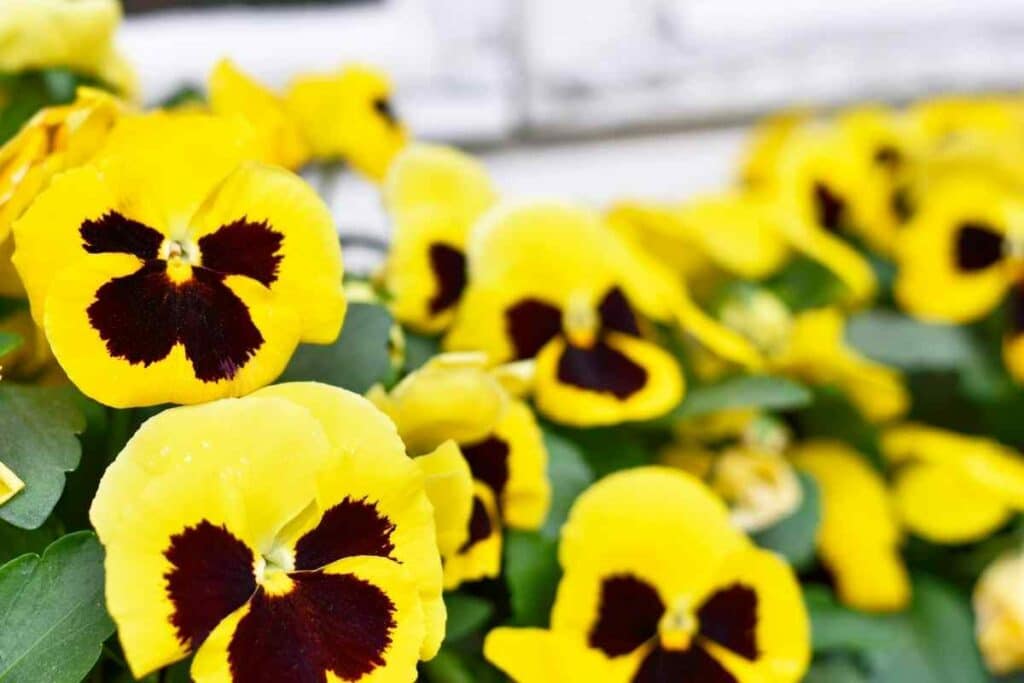
Yellow pansies grow low to the ground and can be used both as ornamental flowers and groundcover.
They are drought resistant and will return year after year to grace your garden with their sunny presence.
Be careful not to overwater yellow pansies, especially when they are dormant during the summer.
16. Yellow Daffodils
Perennial
The Narcissus plant, more commonly known as the yellow daffodil, is a spring-flowering perennial that grows from a bulb with outer petals known as the tepals and bell-shaped inner petals called the corona.
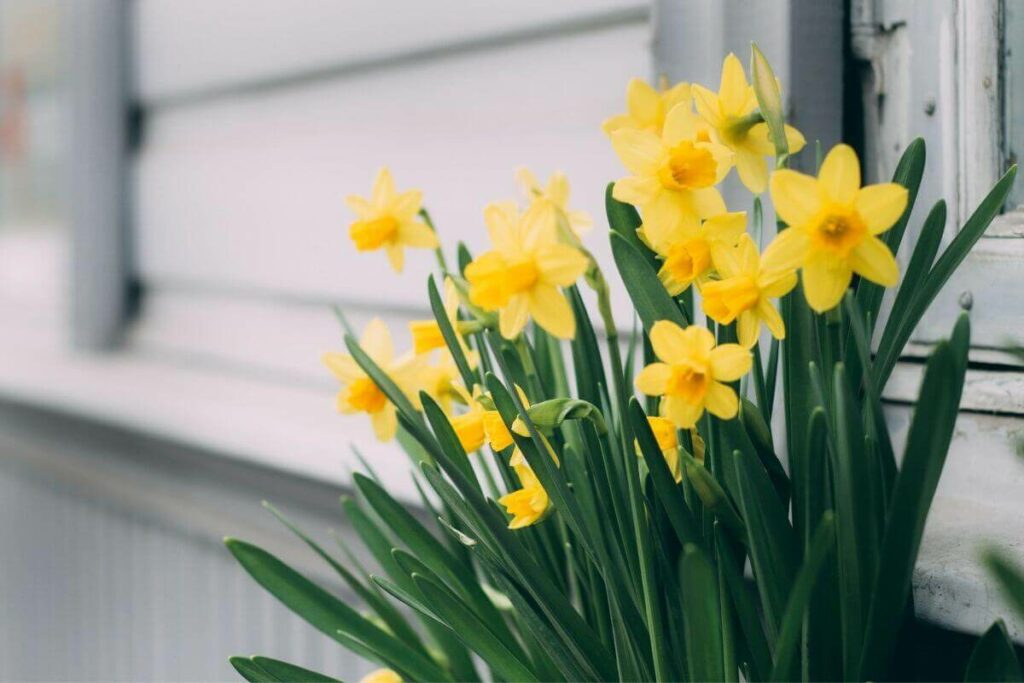
Daffodils originated in Europe and North Africa but are now extremely popular ornamental plants in North America.
The daffodil’s other name, narcissus, may also seem familiar.
This moniker arose from the ancient Greek story of a youth who so loved his reflection in the river, he was turned into a flower so he could gaze upon himself for eternity.
17. Yellow Crocus
Perennial
Yellow crocus is another perennial spring flower that comes back year after year from a bulb.
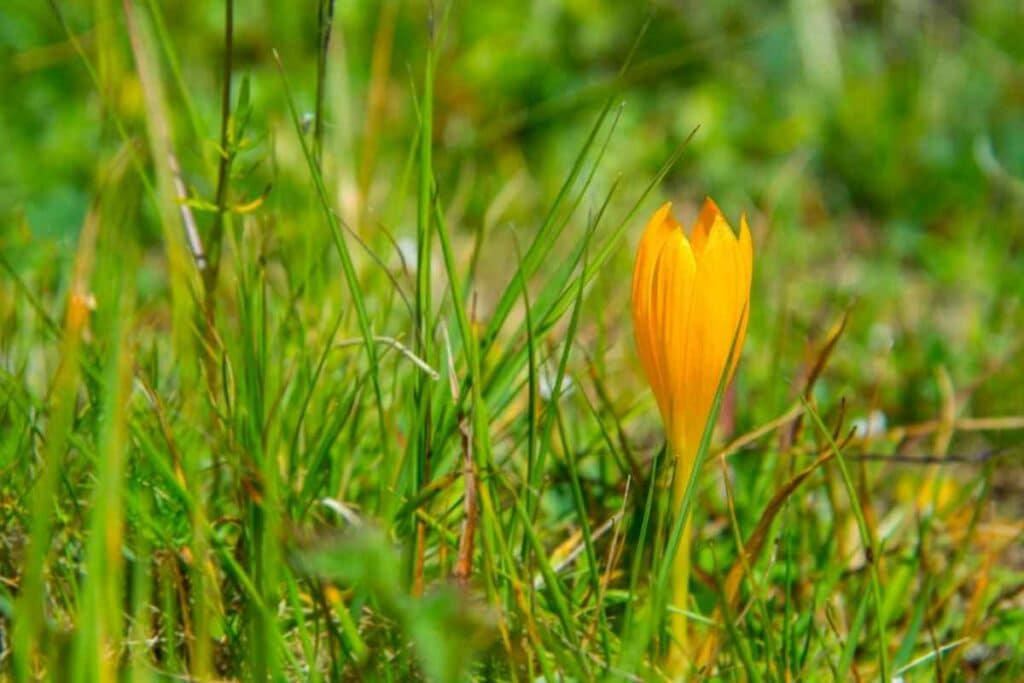
These low-to-the-ground yellow flowers originated in Greece and thrived on the mountain slopes.
Once a scrubby-looking ground cover plant, the crocus has been bred into a gorgeous ornamental flower that does well in both pots and gardens and is grown worldwide.
18. Forsythia Shrubs
Perennial
Forsythia is a flowering yellow shrub that can grow incredibly large, but with proper maintenance, stays small enough to be a welcome complement to any garden.
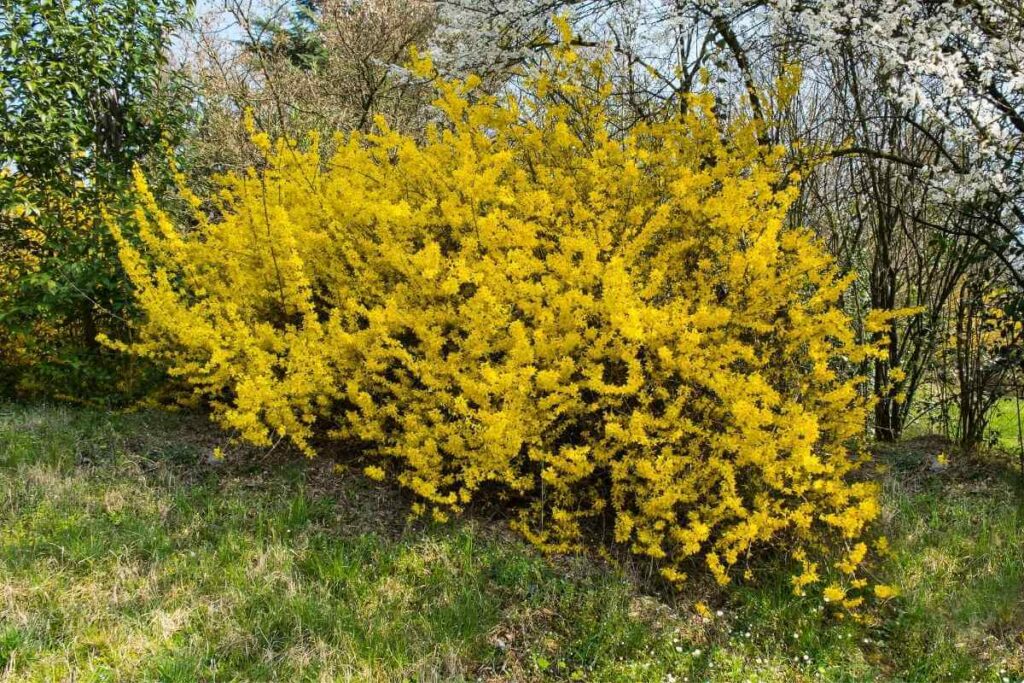
Although they are in the olive family, these shrubs produce no fruit, just golden yellow flowers that turn the whole bush a wonderful yellow hue.
The forsythia shrub blooms in early spring and the flowers persist for a few weeks.
At their garden size, forsythia remains about 3 feet tall but left unchecked, they can reach nearly 20 feet in height!
19. Yellow Hyacinth
Perennial
Few yellow spring flowers are as spectacular as the yellow hyacinth, with their flower clusters that encompass almost the whole stalk.
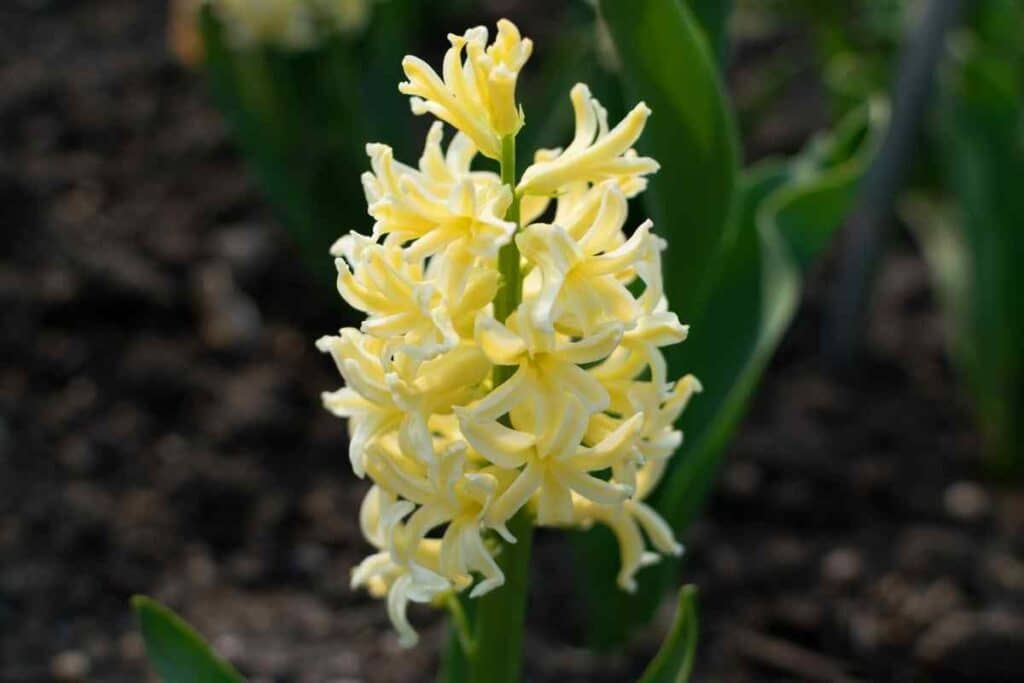
Formally thought to be a type of lily, hyacinths are now recognized as their own flower.
Hyacinths are traditionally a purple or blue hue, but cultivation and hybridization have created hyacinths that are white, pink and even buttery yellow.
20. Golden Chain Tree
Perennial
The second tree on our list, the golden chain tree is fussy about its planting location, but if you’ve got the right mix of temperature and sun, it makes a beautiful yellow addition to any springtime garden.
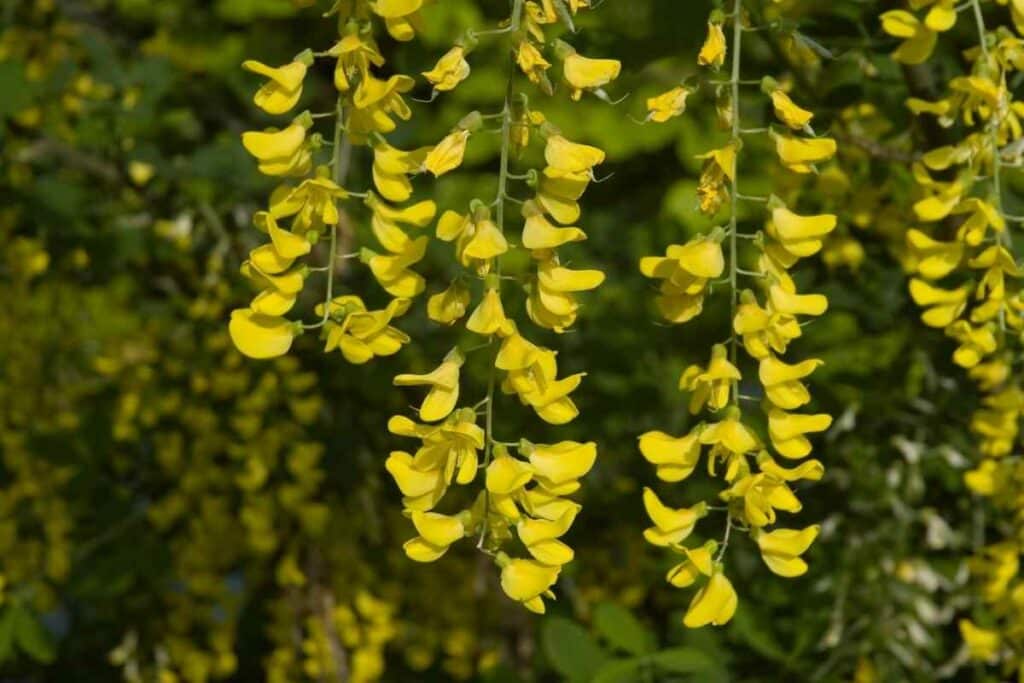
The golden chain tree in bloom is simply spectacular.
The blooms are up to 20 inches in length, comprised of many tiny flowers, and they hang from the branches of the tree in heavy bunches.
